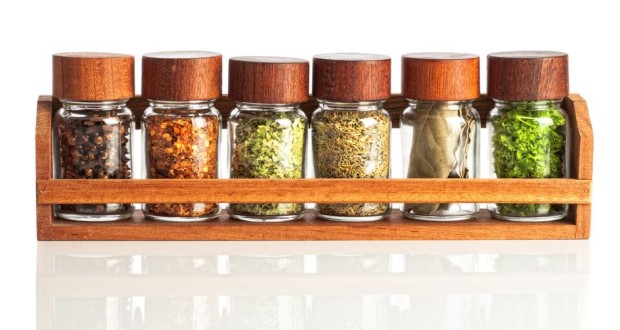Even in the world’s wealthiest nations, outbreaks of contaminated food are not an infrequent occurrence. In 2012 alone, the Centers for Disease Control and Prevention (CDC) issued warnings about sixteen different outbreaks, most of which involved either e. coli or salmonella bacteria. Such contaminants partially explain why 48 million Americans suffer food poisoning every year.
Most people associate food-borne bacteria outbreaks with items like fruits, veggies and meat products. While this is often the case, dangerous microbes can lurk inside some surprising hosts. One surprising area that could be housing certain contaminants is your spice cabinet.
An Overseas Problem
For centuries, spices have been a highly valued and sought after commodity. While spices in modern times are used simply as condiments, this was not the case throughout the Middle Ages and into the Renaissance. During this time period, numerous spices were employed for a wide range of purposes, ranging from making perfume to embalming monarchs and other members of the ruling nobility. Since refrigeration would not exist for centuries, spices represented the best option for preserving cuts of meat, and were also a prominent ingredient in many medicinal remedies.
With modern technology, of course, spices are rarely used for anything other than improving the taste of various dishes. Still, there is still significant demand for them in the developed world. The United States imports $1.1 billion worth of spices annually.
Given that many of the spices we enjoy hail from different corners of the globe, harmful substances have plenty of opportunities to sneak into spice shipments. Recent research has found that the scope of the problem is much larger than what is commonly thought. According to the US Food and Drug Administration (FDA), a troubling 12 percent of spice imports contain rodent hairs, insect parts and certain types of bacteria. In other words, nearly one in eight imported spices harbors some sort of contaminant. This figure is nearly double the contamination rate of other imported foods screened by the FDA.
The list of foreign substances unearthed by FDA testing reads like something out of a horror novel. Below is a list of nasty stowaways found in samples of imported spices:
- Animal excrement
- Insects, both dead and alive
- Human hair
- Rubber bands
- Twigs
- Parts of insect bodies
- Rodent hair
- Plastic
- Synthetic fibers
- Wood shivers
- Staples
- Stones
These tainted spices originate in many South and East Asian countries, and are also imported from several nations in Central and South America. The two nations responsible for most contaminated spices are India and Mexico. Contaminated spice shipments have also been traced back to China, Vietnam, Brazil, Malaysia and Turkey.
Findings and Fallout
The FDA spent three years studying the quality of spices shipped to American ports, publishing its report on the issue in October 2013. The FDA’s research detailed which spices were prone to contamination, along with the identity of common pollutants and their effect on public health.
- Since 1973, there have been fourteen separate outbreaks triggered by imported spices. Combined, these outbreaks caused over 1900 people to fall ill, leading to 128 hospitalizations and two confirmed deaths.
- Of the fourteen spice-related outbreaks, ten could be blamed on the presence of salmonella bacteria.
- The spices that contained foreign substances included black pepper, red pepper, white pepper, fennel seed, curry, white pepper and turmeric. Four of the fourteen outbreaks identified by the FDA were triggered by contaminated black pepper.
- More than one in twenty spices (6.6%) tested during the study contained salmonella.
- FDA researchers found more than 80 types of bacteria on samples of imported spices. Seven percent of these bacteria exhibited resistance to antibiotics.
- Due to salmonella bacteria, 750 spice shipments were blocked from entering the United States. Additionally, 240 shipments that tested positive for various kinds of “filth” (a term which includes insects, excrement and hair) were also denied entry.
The process by which spices are transported from small-scale farms to supermarket shelves might explain the frequency of this problem. Rather than sell their spices immediately after harvesting them, many farmers keep spices stored away on their property, sending them to collectors only when the financial need arises. Likewise, these collectors tend to stockpile incoming spice shipments, allowing them to accumulate over a prolonged period of time. Once these reserves have reached the desired levels, the collectors ship their spices to processing plants, where they are finally vetted for irregularities.
This frequently-lengthy process can give bacteria and assorted filth ample time to infest spice stockpiles. It is not unheard of for collectors to store shipments of spices for several years. Additionally, the small farms which produce these spices often use techniques that could open the door for contamination. With their limited resources, these farmers are forced to plow their fields with animals, harvest their crops by hand and dry spices in the open air. Consequentially, contaminants from humans, farm animals and even birds may find their way onto the farmer’s spices.
There are a few silver linings to the FDA’s report. First, while 12 percent of the tested samples harbored unsanitary materials, food poisoning from spices is still relatively uncommon; far more shoppers have been sickened by other contaminated foods than from spices. Additionally, the Spice Board of India has launched a collaborative effort aimed at addressing this issue, working directly with spice farmers to craft new rules and regulations. Finally, the FDA states that it has subjected spice manufacturing facilities to increased scrutiny in recent years, and plans to take additional steps to ensure the quality of spices sold to US consumers.
 Natural Knowledge 24/7 Educate yourself with nutrition, health and fitness knowledge.
Natural Knowledge 24/7 Educate yourself with nutrition, health and fitness knowledge.






